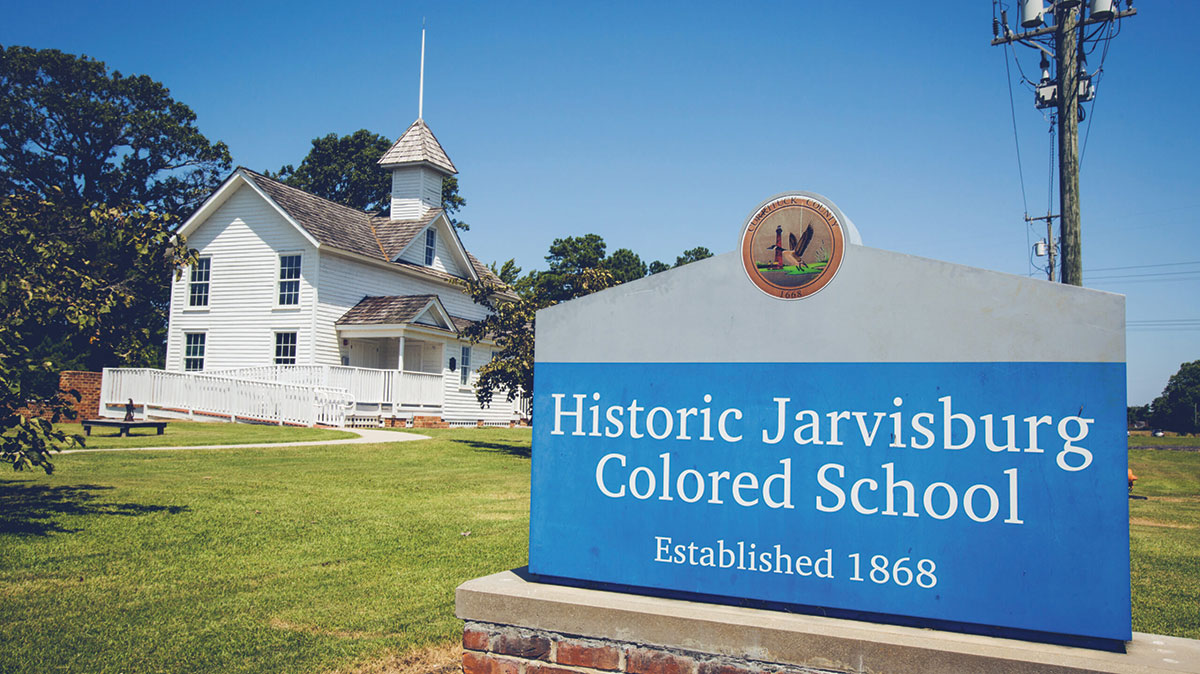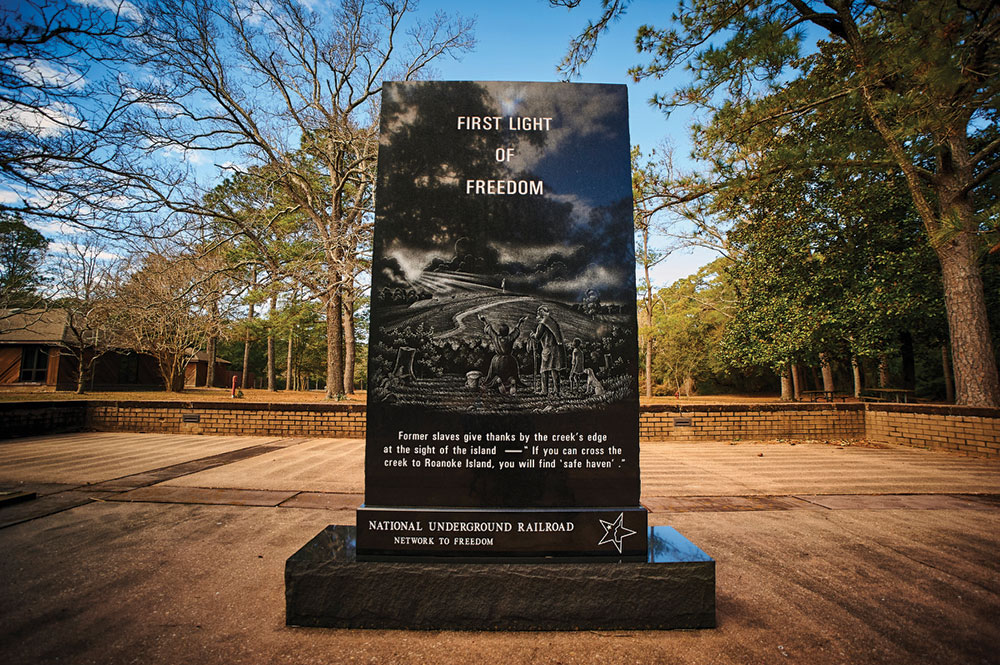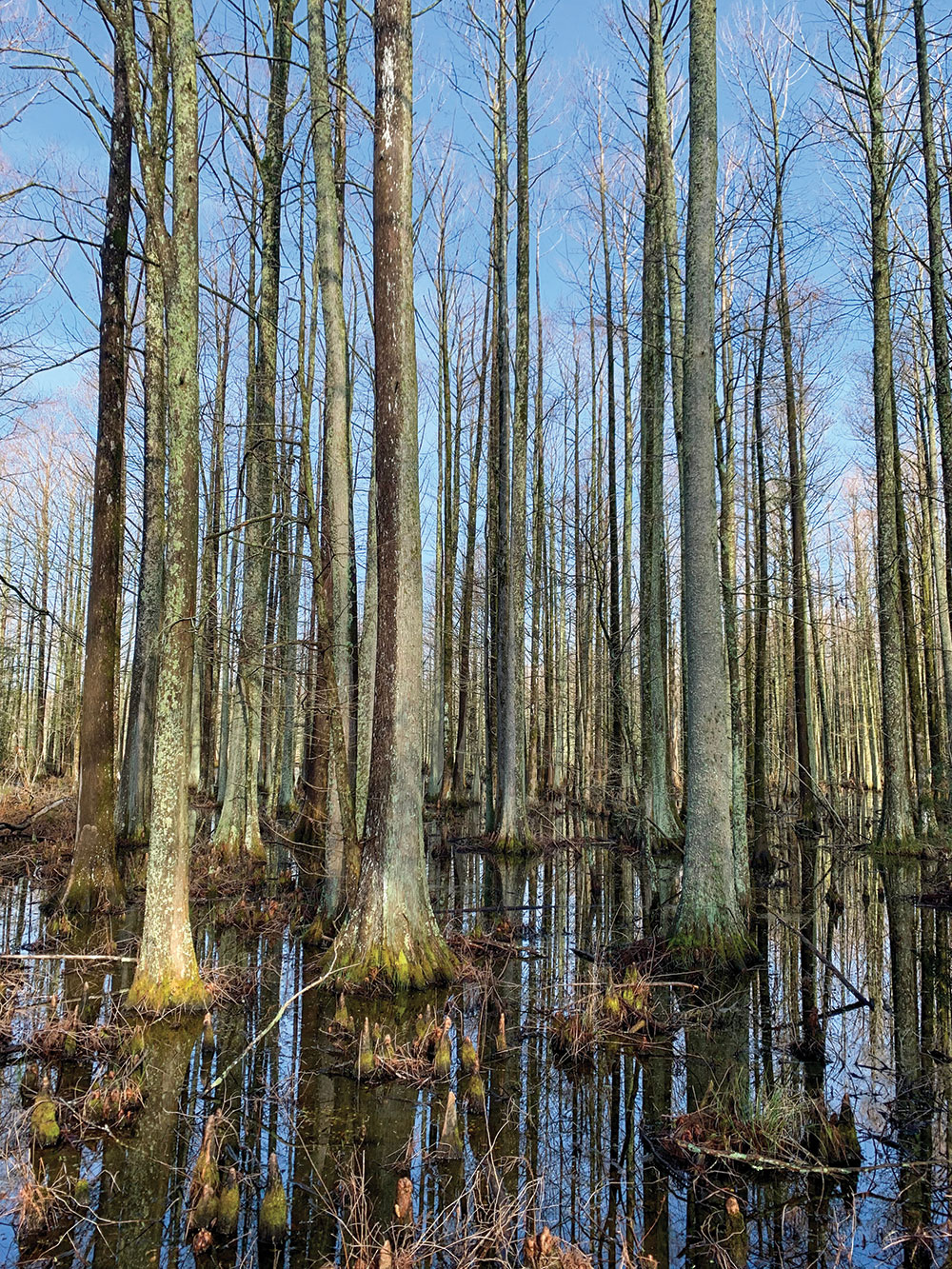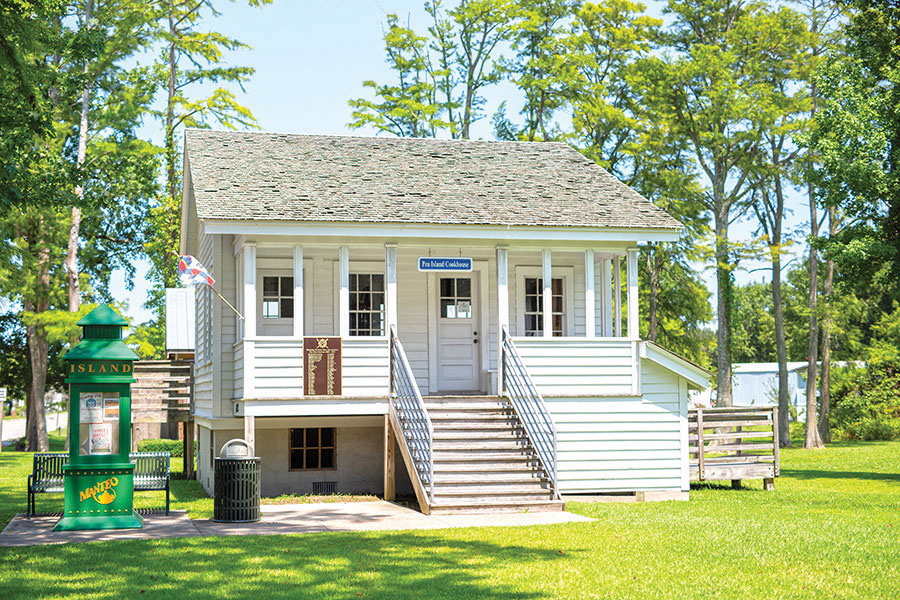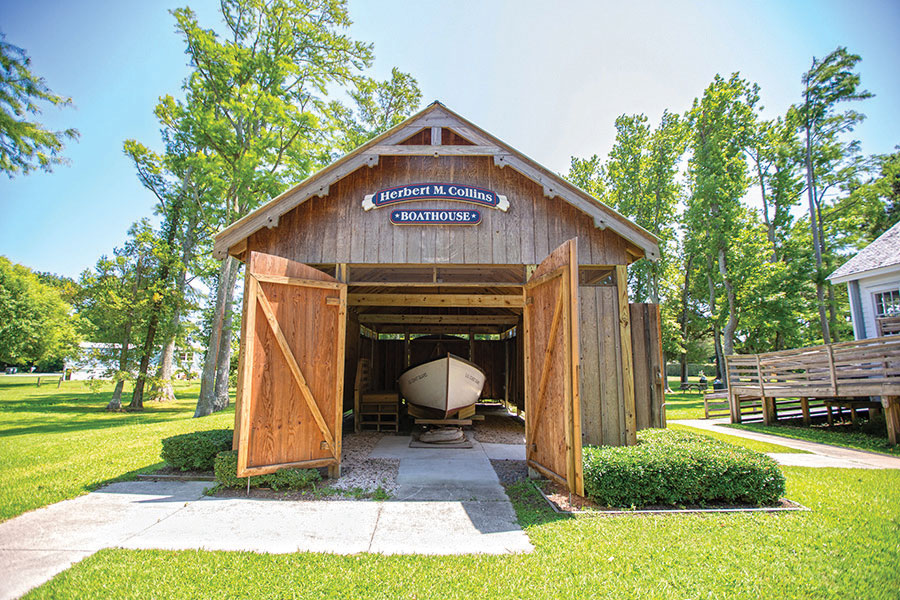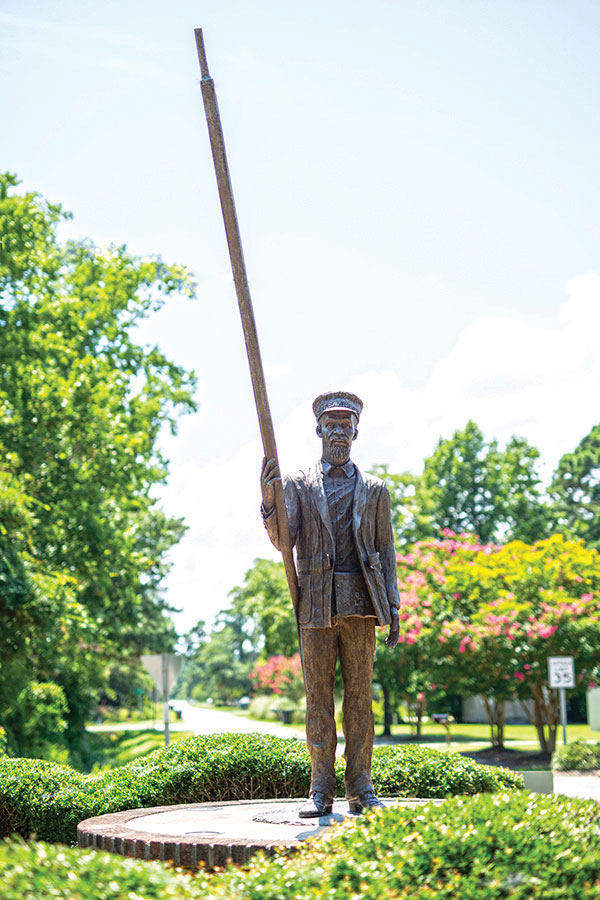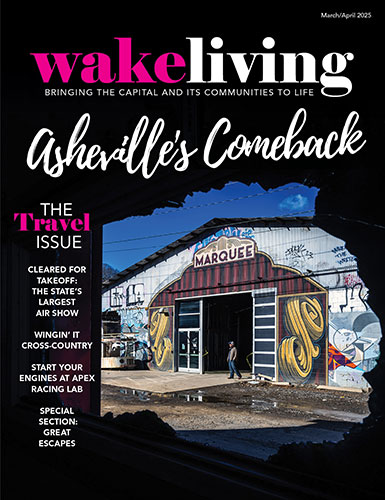“This little piece of land, this northeastern corner (of North Carolina) is where it all started — where America started. The Lost Colony, First in Flight, so many firsts happened here,” says Tameron Kugler, Currituck County Travel and Tourism Director.
Currituck County is home to well-known North Carolina Outer Banks attractions such as Corolla’s quiet shoreline, 4×4 vehicle beach access area, and legendary roaming wild horses, which entice visitors from hundreds of miles away.
ncblackheritagetour.com
@ncblackheritagetour
Lesser known among Currituck’s attractions is the Historic Jarvisburg Colored School, founded in 1867 by a freed slave, William B. Hunt, which served as the only established facility dedicated to educating Black students through the early 1900s.
The Historic Jarvisburg Colored School is one of dozens of important landmarks celebrating the history, culture, and contributions of African Americans in the northeastern section of the state.
Kugler recognized an opportunity to bring attention to these important sites, through increased visitor traffic and a more comprehensive understanding of a region rich in history.
“I knew that the surrounding counties — Dare, Pasquotank, Perquimans, Chowan — had African American historical assets of their own. … Maybe we can all get together and put something in place, some kind of a tool, so we can pool our (resources) and create something that is more of a visitor experience,” she says.
Kugler planted the seed of this idea with the neighboring counties, and everyone enthusiastically jumped on board, eventually resulting in the African American Experience of Northeast NC (AAENENC), a trail connecting North Carolina visitors and residents with historical landmarks and the stories behind them.
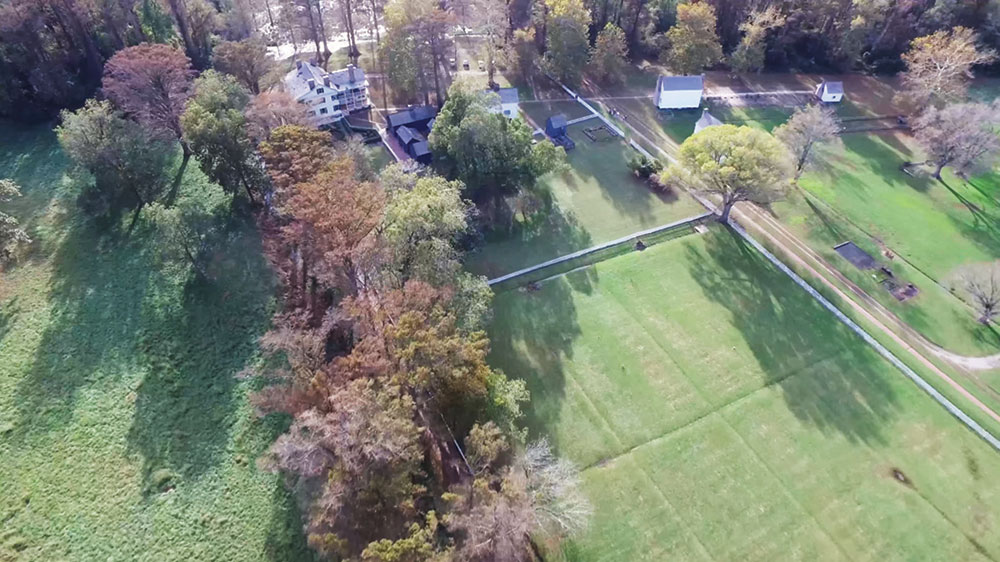
Somerset Place Historic Site
CAMDEN
Notable site: Dismal Swamp State Park
CHOWAN
Notable site: Maritime Underground Railroad Waterfront
CURRITUCK
Notable site: Historic Jarvisburg Colored School
DARE
Notable site: Fort Raleigh National Historic Site
GATES
Notable site: Reid’s Grove School
MARTIN
Notable site: Hamilton Rosenwald School
PASQUOTANK
Notable site: Mariners’ Wharf
PERQUIMANS
Notable site: Colored Union Soldiers Monument
WASHINGTON
Notable site: Somerset Place State Historic Site
“Six counties worked together and put a plan in place and opened up a trail in six months via online conference,” says Kugler, with a hint of amazement.
The project was truly a collaboration, requiring cooperation of many, including county tourism departments, local government representatives, an experienced online meeting facilitator, a veteran marketing executive, the website development team, and more.
Candidly, Kugler admits, “The tourism executives are all white. We knew that we couldn’t interpret that story accurately because it wasn’t our story. We decided we needed to put together an advisory board made up of African American citizens, civic leaders, and historians. We wanted a community that knew this history and was a part of this history.”
AAENENC launched to the public on Juneteenth of 2021. The website — ncblackheritagetour.com — outlines the included sites, providing historical background and contact information for each, as well as suggested visitor itineraries in select counties.
“Each site has its own individual personality,” says Kugler. “Each one tells its own specific story, offering snippets of things you didn’t know.”
There’s the Great Dismal Swamp in Camden County, for example, where the wild, dense underbrush and threat of predators created a place of refuge for Black people seeking freedom, and may have been home to the largest colony of maroons, or runaways, in the US.
Or the Pea Island Cookhouse Museum in Manteo, celebrating the all-Black team of the Pea Island Lifesaving Station, led by Civil War veteran Richard Etheridge, charged with protecting miles of NC coastline.
Or the Historic District of Elizabeth City State Teachers College, (now Elizabeth City State University), established in 1891 as a school for training African American teachers. The original six buildings, recognized on the National Register of Historic Places, make up the historic district within the thriving university.
Three additional counties joined the tour since its inception, growing the total to more than 30 visitor-ready sites.
“Though these sites might live individually, you don’t realize how much there is until you aggregate,” says Martin Armes, longtime NC tourism professional who directs marketing efforts for the AAENENC.
“The Outer Banks are among the most popular NC vacation destinations. This gives people something else above and beyond your traditional beach experience. There’s lots to see and do coming and going (from the coast),” says Armes.
The trail earned multiple industry awards for marketing and partnerships, celebrating the collaborative process needed to launch the intercounty endeavor, but the work isn’t yet complete.
Additional sites are undergoing improvements to be made ready for visitors, and more counties recruited to expand the tour.
“The long-range goal is to hopefully have an NC African American Experience Trail, where you go from coast to mountains. Hopefully at some point the Civil Rights Trail and other trails get folded into it so there is one source to go find historic destinations,” says Kugler.




